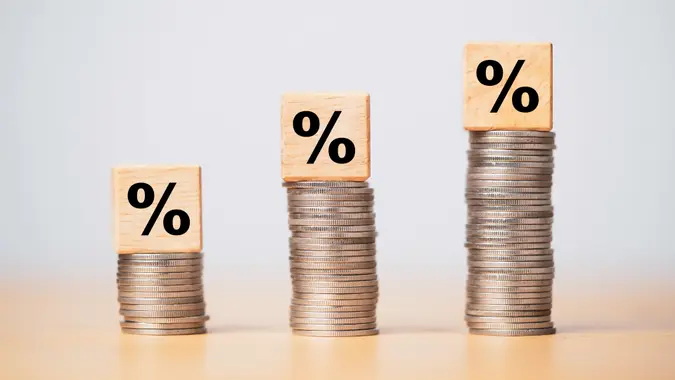Can You Lose Money in a High-Yield Savings Account?

Commitment to Our Readers
GOBankingRates' editorial team is committed to bringing you unbiased reviews and information. We use data-driven methodologies to evaluate financial products and services - our reviews and ratings are not influenced by advertisers. You can read more about our editorial guidelines and our products and services review methodology.

20 Years
Helping You Live Richer

Reviewed
by Experts

Trusted by
Millions of Readers
In short, the money you put into a high-yield savings account is very safe. Unlike stocks or mutual funds, where your balance can rise and fall with the market, the cash you deposit in a high-yield savings account doesn’t face those kinds of risks.
However, there are scenarios where you can indirectly lose money.
How To Avoid Losing Money In Your High-Yield Savings Account
While generally seen as a fairly secure way to save your money, there are no guarantees. These are some ways you can prevent any potential losses to your savings.
1. FDIC or NCUA Insurance
It’s important to make sure that your account benefits from the standard $250,000 insurance provided by either the FDIC or NCUA. But remember, this magic number is only the maximum per account holder per bank. If you hold an account with a national bank, the chances are, your money is backed.
All to say, if your account balance exceeds $250,000, it’s wise to split it across more than one financial institution.
2. Know Your Account Terms
Fees and seemingly arbitrary requirements can chip away at your high-APY savings account. Don’t be caught unaware if there are fees on the account. Potential fees include
- Monthly maintenance
- Excessive withdrawal
- Account inactivity
Some accounts also require a minimum balance to open an account or to earn the highest APY rate offered.
3. Get a Competitive Rate
Interest rates can go up or down at any time. Make sure you keep shopping around, even after you have your account to make sure you still have the best rate.
The Bottom Line
High-yield savings account are a very low-risk and low-maintenance way to earn extra money.
However, it’s important to keep in mind that things like inflation can affect the value of your savings over time. By choosing a well-established, insured bank that offers good interest rates, you can safely grow your savings with little risk. Here are our picks for the best high-yield savings accounts.
FAQ
See answers to some of the most frequently asked questions about high-yield savings accounts and how to keep your money safe.- Is my money safe if the bank fails?
- If a bank fails, your money is insured up to $250,000. You can try spreading your money across multiple banks to give yourself the same $250,000 coverage per bank.
- Can inflation erase the benefits of a high-yield savings account?
- Inflation can absolutely neutralize the interest you earn with a high-yield savings account. That's not to say using a high-yield savings account is a bad idea -- but it may be wise to think of HYSAs more as a way to combat inflation than to give you extra pocket money.
- What fees should I watch out for?
- High-yield savings accounts can come with fees to watch out for, including monthly account maintenance fees or fees for receiving paper statements. You can usually avoid these by meeting the requirements to waive them.
 Written by
Written by  Edited by
Edited by 

























